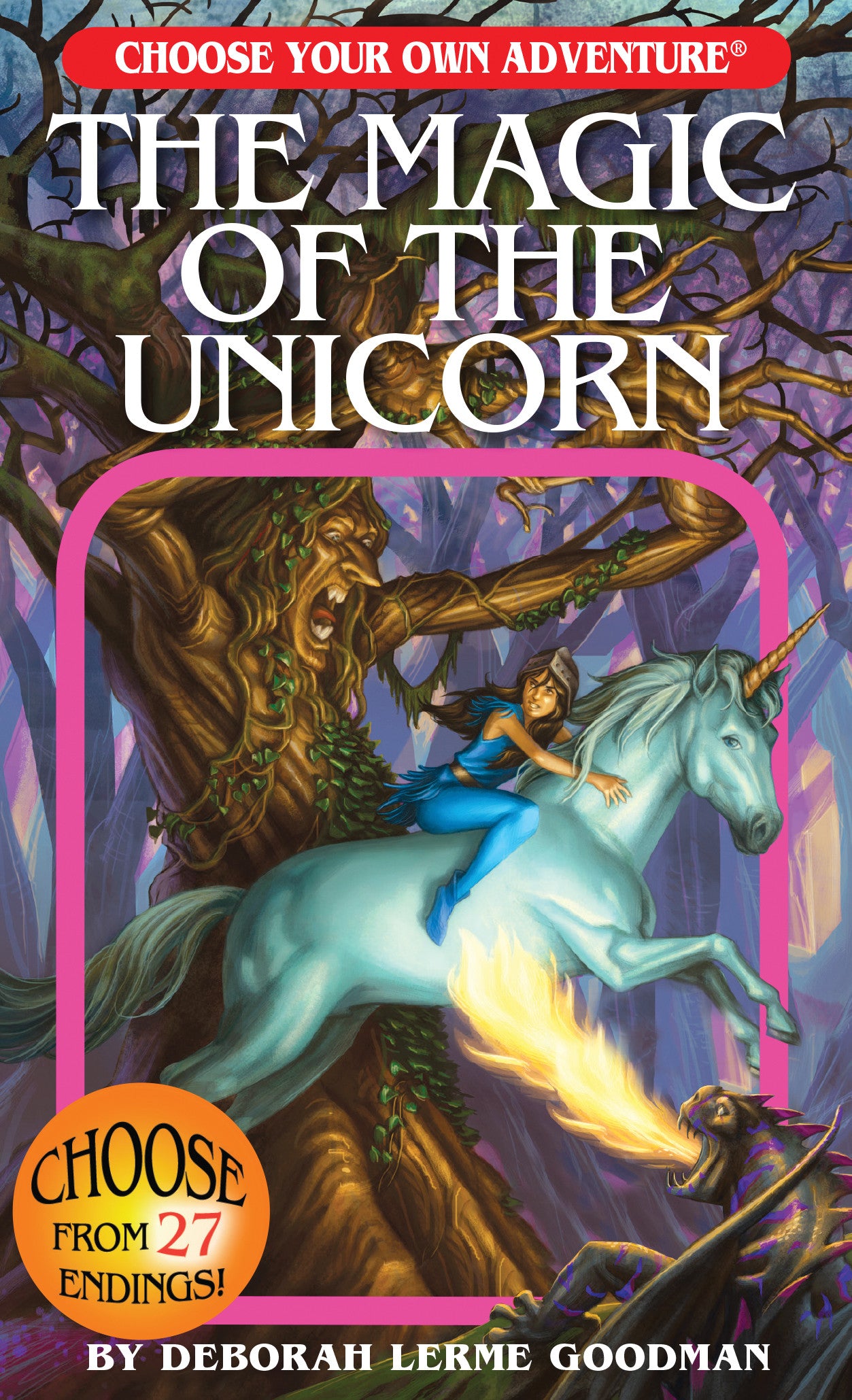Read the previous piece in the series here.
ℑ don't think it even approaches being a secret that I am a nerd, and a big one. I don't think its anything resembling a secret, either, that I (quietly?) encourage my daughter, seven years old as I write this, to follow along in my nerdiness. She's picked up a fair bit of it in musical taste so far, which pleases me, and there are glimmers of it in such things as a recent question she asked me: "Daddy, what's a gelatinous cube?" I am pleased to report that she appreciated a quick perusal of an older-edition Monster Manual for an answer, and it looks to be time to encourage her towards roleplaying games.
 |
| The cover, of course. Image taken from the book's webpage, used for commentary. |
Like all examples of the genre, The Magic of the Unicorn rewards re-readings and consideration of choices to be made; there are multiple endings to be found, and not all of them are particularly pleasant, although no few of them are. And while the specific text may be a bit ambitious for my daughter at this point--she's in first grade now, and the book checks out at a fifth-grade reading level--the ability to make choices and have them matter is something that my little girl appreciates. Too, she likes unicorns and dragons and the like that appear in the text, even though she doesn't always like every ending she runs into as we read it together.
The more pertinent stuff for this webspace, though, is how the text presents the medieval. It certainly presents itself as presenting it; ad copy on the book's webpage offers the following description:
Only a unicorn's horn can purify the water in your medieval village, so you set off to find one. Can you solve the town riddle and find the sorceress? Does a unicorn reside in the forest? A fire-breathing dragon, angry warlock, and powerful wood-witch all stand in your path.So, that is there. The first sentence of the book complicates the matter, however; reading "The summer of 1507 is exceptionally dry throughout Flanders" (1), the statement regarding setting puts the events of the book into the ambiguous, liminal period that could be considered either medieval or early modern, depending on definitions of the terms (as noted here). While it does get the bit about the drought right, the ambiguous placement in time sits...oddly with me as I read it against the description of the book as medieval.
The rest of the text and the paratext work to make the book more medieval, however. Although there is much of the hovels-and-heraldry stereotyping at work, there are a lot of details that ring true. A weaver figures eminently, and weaving was among the major economic drivers of Flanders at the time. Too, monastic figures and churches take up a fair bit of space in the work, reinforcing the association with the medieval (yes, such figures extend well outside the medieval, but the medieval is often presented as typified by the interpenetration of Christian institutions into civil ones), and "typical" feudal structures are very much in place. In all, as might be expected from a children's book (and about which I have opined before), The Magic of the Unicorn works from an idealized, condensed, compressed understanding of the medieval that does well enough--again, unpleasant endings await readers, averting the Disneyfication of the period--and it could do better without losing narrative thrust or confusing younger readers.
That said, there are things the book does well. An early encounter along one narrative line in the text is with "Simon, a traveling peddler [the protagonist has] always liked" (7). The accompanying illustration (6), at least in the edition of the text I have, is of a dark-skinned man in what appear to be good clothes--they compare favorably with even some of the noble figures presented in the book, and better than the clothes worn by the prominent weaver (37)--so the problems of the monochrome Middle Ages and the Manichean allegory are averted (at least in part; tokenism may still be regarded as an issue of concern). Too, while there is much flattening of the medieval in the text, and there are decidedly fantastical elements in it--dragons, griffins, alchemy, and the titular magic and unicorn--the book does not avoid peril, injury, and death--including in what seems very much an oubliette, medievalist if not necessarily medieval; the book's medievalism is not all knights and princesses and pageantry, even as it is not all grim and grime and gory. And in maintaining at least that much nuance, it does decently enough for an elementary school read--although it, like all of us, could do better.

No comments:
Post a Comment